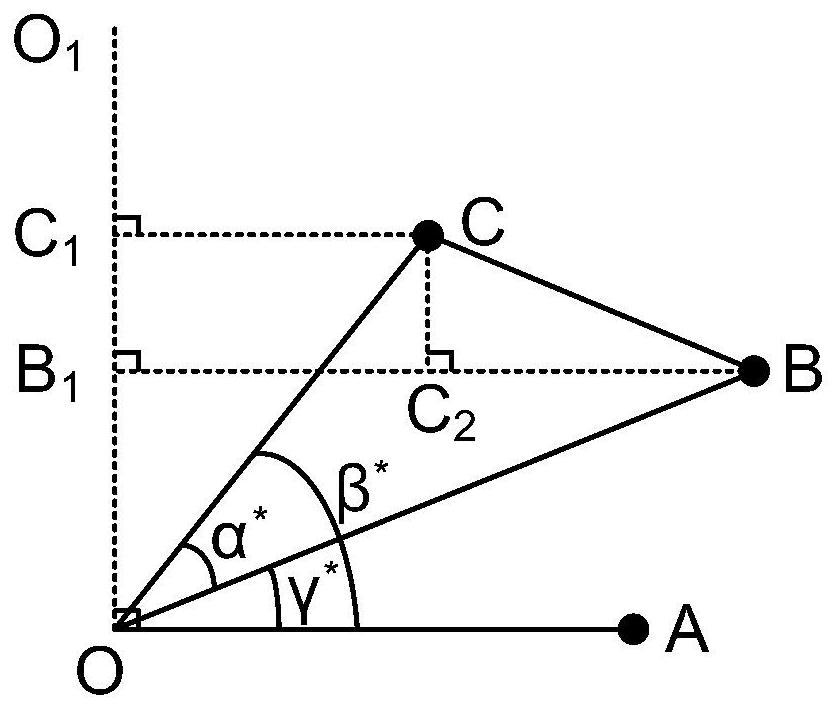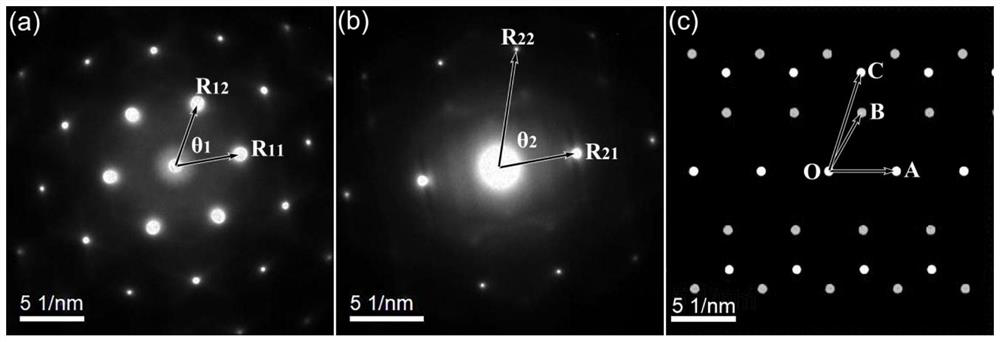Method for carrying out object phase identification by utilizing two electron diffraction patterns with axes or high-resolution images
An electron diffraction, high-resolution technology, applied in the field of phase identification, can solve the problem that the crystal phase cannot be completely determined, and achieve the effect of overcoming uncertainty and simplifying crystal tilting.
- Summary
- Abstract
- Description
- Claims
- Application Information
AI Technical Summary
Problems solved by technology
Method used
Image
Examples
Embodiment 1
[0092] Example 1 Using two electron diffraction patterns for phase identification
[0093] 1) In a JEOL JEM-2100 transmission electron microscope, record two belt-axis electron diffraction patterns of silica reduction products at 200kV, as shown in figure 2 shown in a and 2b.
[0094] 2) Measure the two-dimensional primordial cells on two axial electron diffraction patterns
[0095] With the transmission spot as the center (the origin O of the two-dimensional primitive cell), the parallelogram formed by the nearest neighbor diffraction points A and B as adjacent sides is used to construct a two-dimensional primitive cell, as figure 2 shown in a and 2b. Two sets of two-dimensional primordial cells were obtained from two electron diffraction patterns, and the measurement results are listed in Table 1.
[0096] Table 1
[0097]
[0098] 3) Determine the gravitational diffraction point. Substitute the measurement results in step 2) into the formula in turn Available ...
PUM
 Login to View More
Login to View More Abstract
Description
Claims
Application Information
 Login to View More
Login to View More - R&D
- Intellectual Property
- Life Sciences
- Materials
- Tech Scout
- Unparalleled Data Quality
- Higher Quality Content
- 60% Fewer Hallucinations
Browse by: Latest US Patents, China's latest patents, Technical Efficacy Thesaurus, Application Domain, Technology Topic, Popular Technical Reports.
© 2025 PatSnap. All rights reserved.Legal|Privacy policy|Modern Slavery Act Transparency Statement|Sitemap|About US| Contact US: help@patsnap.com



